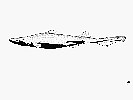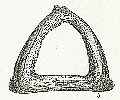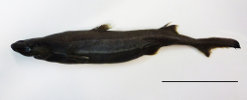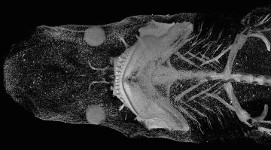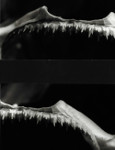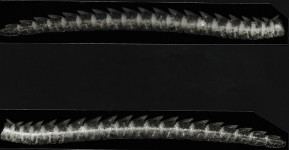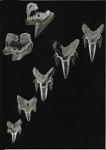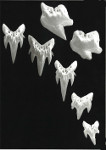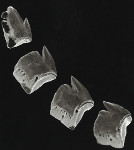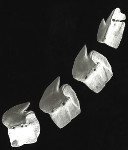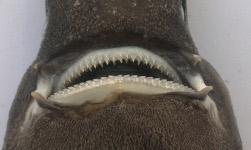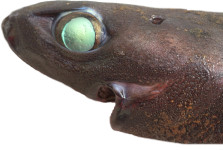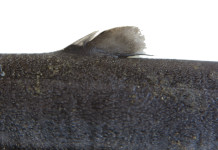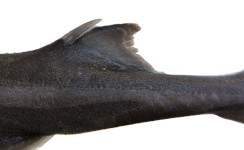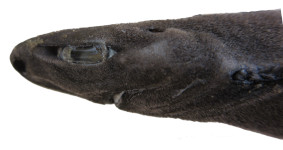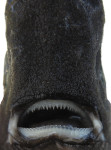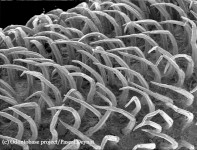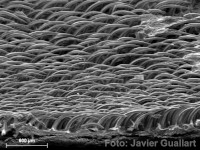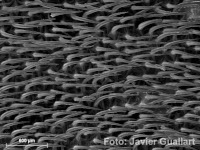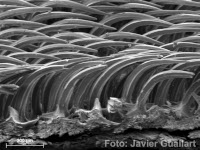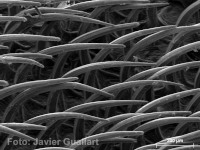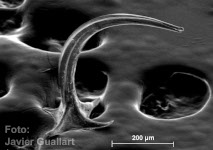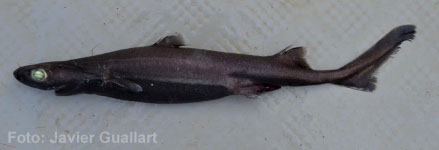Etmopterus spinax
(Linnaeus, 1758)
Velvet belly lantern shark
Classification: Elasmobranchii Squaliformes Etmopteridae
Reference of the original description
Systema Naturae per regna tria naturae, regnum animale, secundum classes, ordines, genera, species, cum characteribus differentiis synonymis, locis. Tomus I. Editio decima, reformata. Stockholm, Laurentii Salvii, 824pp.
Systema Naturae per regna tria naturae, regnum animale, secundum classes, ordines, genera, species, cum characteribus differentiis synonymis, locis. Tomus I. Editio decima, reformata. Stockholm, Laurentii Salvii, 824pp.
Image of the original description
No image in first description.
No image in first description.
Synonyms / new combinations and misspellings
Etmopterus aculeatus, Etmopterus cf. spinax, Spinax gunneri, Spinax linnei, Spinax niger, Spinax spinax, Spinax vitulinus, Squalus infernus, Squalus niger, Squalus spinax
Etmopterus aculeatus, Etmopterus cf. spinax, Spinax gunneri, Spinax linnei, Spinax niger, Spinax spinax, Spinax vitulinus, Squalus infernus, Squalus niger, Squalus spinax
Types
Etmopterus spinax
XXXX: No types known;
Etmopterus aculeatus
XXXX: No types known;
Spinax linnei
XXXX: No types known;
Spinax niger
XXXX: No types known;
Squalus infernus
XXXX: No types known;
Etmopterus spinax
XXXX: No types known;
Etmopterus aculeatus
XXXX: No types known;
Spinax linnei
XXXX: No types known;
Spinax niger
XXXX: No types known;
Squalus infernus
XXXX: No types known;
Description :
Citation: Etmopterus spinax (Linnaeus, 1758): In: Database of modern sharks, rays and chimaeras, www.shark-references.com, World Wide Web electronic publication, Version 05/2025
Please send your images of "Etmopterus spinax" to info@shark-references.com
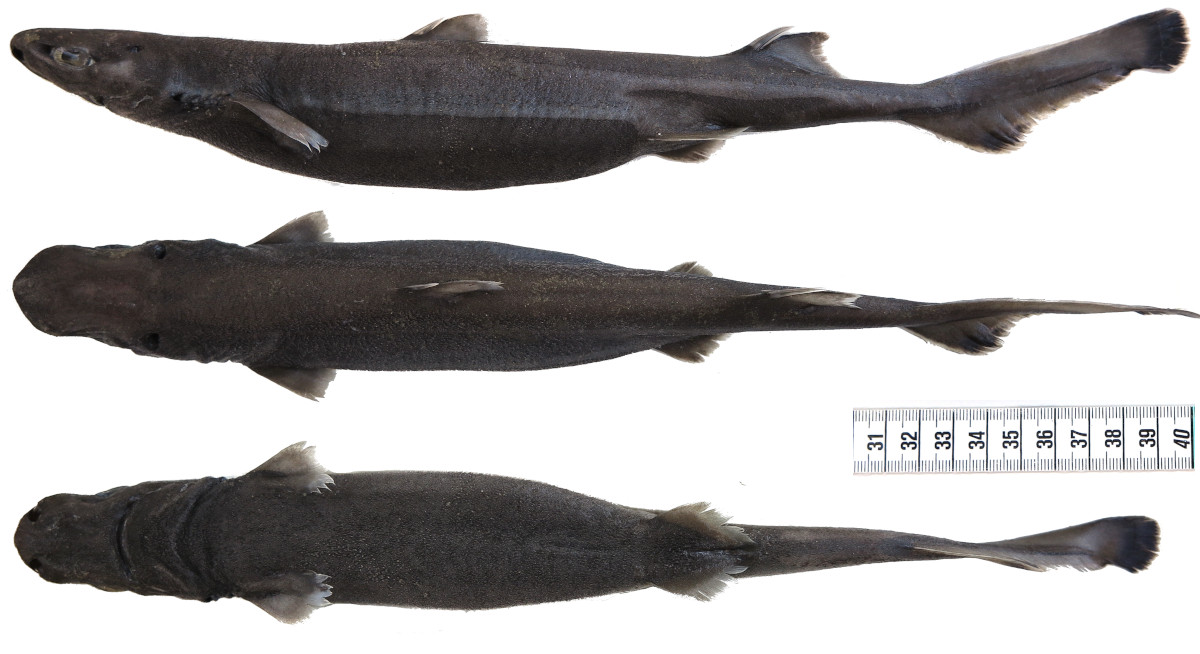
Etmopterus spinax (Linnaeus, 1758), ERB 1337, female, 35,4 cm TL, NE Atlantic, France, © Frederik H. Mollen (Elasmobranch Research Belgium)

Etmopterus spinax (Linnaeus, 1758), ERB 1337, female, 35,4 cm TL, NE Atlantic, France, © Frederik H. Mollen (Elasmobranch Research Belgium)
Common names
 Kleiner schwarzer Dornhai,
Kleiner schwarzer Dornhai,  Samtbauchhai,
Samtbauchhai,  Schwarzer Dornhai,
Schwarzer Dornhai,  Schwarzer Laternenhai,
Schwarzer Laternenhai,  Negrito,
Negrito,  Sagre commun,
Sagre commun,  Épineux de fond,
Épineux de fond,  Velvet belly,
Velvet belly,  Velvet belly lantern shark,
Velvet belly lantern shark,  Velvet belly shark,
Velvet belly shark,  Agugghiú neigru,
Agugghiú neigru,  Babbireddu,
Babbireddu,  Diavulicchiu di mari,
Diavulicchiu di mari,  Moretto,
Moretto,  Moru,
Moru,  Mugghiarulo,
Mugghiarulo,  Occhio-verde,
Occhio-verde,  Pesce diavolo,
Pesce diavolo,  Pesce diavulicchio,
Pesce diavulicchio,  Pesce diavulu,
Pesce diavulu,  Pesce riavulo,
Pesce riavulo,  Sagri nero,
Sagri nero,  Sagri" nero,
Sagri" nero,  Trabantu,
Trabantu,  Ugghiaru,
Ugghiaru,  Zigrino,
Zigrino,  Gata-negra,
Gata-negra,  Gata-preta,
Gata-preta,  Lixinha,
Lixinha,  Lixinha da fundura,
Lixinha da fundura,  Lixinha-da-fundura,
Lixinha-da-fundura,  Quelmazinha,
Quelmazinha,  Raimudo-pequeno,
Raimudo-pequeno,  Xarinha-preta, Mazzola tal-fanal (malta)
Xarinha-preta, Mazzola tal-fanal (malta)
 Kleiner schwarzer Dornhai,
Kleiner schwarzer Dornhai,  Samtbauchhai,
Samtbauchhai,  Schwarzer Dornhai,
Schwarzer Dornhai,  Schwarzer Laternenhai,
Schwarzer Laternenhai,  Negrito,
Negrito,  Sagre commun,
Sagre commun,  Épineux de fond,
Épineux de fond,  Velvet belly,
Velvet belly,  Velvet belly lantern shark,
Velvet belly lantern shark,  Velvet belly shark,
Velvet belly shark,  Agugghiú neigru,
Agugghiú neigru,  Babbireddu,
Babbireddu,  Diavulicchiu di mari,
Diavulicchiu di mari,  Moretto,
Moretto,  Moru,
Moru,  Mugghiarulo,
Mugghiarulo,  Occhio-verde,
Occhio-verde,  Pesce diavolo,
Pesce diavolo,  Pesce diavulicchio,
Pesce diavulicchio,  Pesce diavulu,
Pesce diavulu,  Pesce riavulo,
Pesce riavulo,  Sagri nero,
Sagri nero,  Sagri" nero,
Sagri" nero,  Trabantu,
Trabantu,  Ugghiaru,
Ugghiaru,  Zigrino,
Zigrino,  Gata-negra,
Gata-negra,  Gata-preta,
Gata-preta,  Lixinha,
Lixinha,  Lixinha da fundura,
Lixinha da fundura,  Lixinha-da-fundura,
Lixinha-da-fundura,  Quelmazinha,
Quelmazinha,  Raimudo-pequeno,
Raimudo-pequeno,  Xarinha-preta, Mazzola tal-fanal (malta)
Xarinha-preta, Mazzola tal-fanal (malta)
Short Description
Field marks and Diagnostic Features after EBERT & STEHMANN, 2013 [17836]: Field Marks: Two spined dorsal fins. No anal fin. Blade–like unicuspidate teeth in lower jaw and teeth with cusps and cusplets in upper jaw. Denticles not in lines and with long slender cusps. Abdomen long, tail short, black markings on underside of body and sides of tail prominent. Diagnostic Features: Head broad and flattened, not deep and conical; head relatively long, 19 to 23% of total length and about 2.3 to 2.8 times in snout–vent length; head width about 1.3 to 1.4 times preoral snout; head low, height 9 to 11% of total length. Prespiracular length 1.4 to 1.7 times spiracle–pectoral space. Snout broad, thick and spatulate, not bulbous; preoral length short and 8.1 to 9.3% of total length. Eyes narrow and elongated; upper eyelid possibly without a pale naked patch. Gill openings about as wide as spiracle; width of third gill opening less than one–third eye length. Mouth relatively broad and 1.3 to 1.4 times eye length. Total tooth row counts upper jaw 22 to 32, lower jaw 26 to 40; upper teeth generally with 3 pairs of cusplets or less, cusps expanded, about three times higher than adjacent cusplets; sexual dimorphism in upper teeth uncertain. Body moderately firm, cylindrical, and moderately stout. Predorsal spine length about 31 to 37% of total length; interdorsal space 0.6 to 1.4 times head length and usually longer than prebranchial length; pectoral–pelvic space about 0.8 to 1.4 times head length in adults; snout tip to rear flank marking base subequal to snout tip to second dorsal spine origin; dorso–caudal space 10 to 12% of total length, about 1.4 to 2.0 in interdorsal space; pelvic–caudal space 19 to 21% of total length, about 2.0 to 2.2 times first dorsal–fin length, 0.7 to 1.7 in interdorsal space, about as long as prebranchial length, subequal to about 1.4 in pectoral–pelvic space. No rows of greatly enlarged denticles on flanks above pectoral fins; denticles largely covering underside of snout; denticles on head, flanks and tails not in regular longitudinal rows; denticles present on second dorsal fin, covering it; lateral trunk denticles high, slender, and close–set, with very slender, strongly hooked conical crowns. Distal margins of fins not fringed with naked ceratotrichia. Pectoral fin small with anterior margin length about 8 to 9% of total length, rounded–subangular in shape. First dorsal–fin origin about opposite or just behind pectoral–fin free rear tips, base much closer to pectoral–fin bases than pelvic fins; first dorsal–fin spine stout, short, and usually lower than first dorsal–fin apex, spine origin nearer to snout tip than upper caudal–fin origin. Second dorsal fin much larger than first and about twice its area, height about 38 to 42% of second dorsal–fin length, apex narrowly to broadly rounded, posterior margin deeply concave; second dorsal–fin spine stout and strongly recurved, with its tip obliquely vertical in adults. Dorsal caudal–fin margin about equal to head length. Vertebral counts: total vertebral counts 81 to 91, precaudal vertebral count 55. Intestinal valve count unknown. Size moderately large with adults rarely above 45 cm but reaching 60 cm. Colour: brown on dorsal surface, underside of snout and abdomen abruptly black, dorsal surface light, ventral surface conspicuously dark; precaudal fins dark distally, webs sometimes conspicuously lighter than bases or body; a conspicuous or obscure dark band on the terminal caudal lobe and often a dark blotch on ventral caudal lobe, but no dark band through middle of caudal fin; presence of light pineal blotch on dorsal surface of head uncertain. No conspicuous photolines on body. Suprapelvic photomark possibly absent. Flank photomarks present; flank photomark base forward and under second dorsal–fin spine; anterior branch of flank photomark long and broad, much longer than posterior branch, posterior branch 38 to 53% of anterior branch; posterior branch broadly lobate but not truncate, merging ventrally with post– pelvic photomark and not extending behind free rear tip of second dorsal fin. Ventral saddle–shaped precaudal photomark absent from middle of caudal peduncle. Caudal photomarks present; caudal–base photomark present, with anterior branch broad but not enveloping ventral surface of caudal peduncle and extending onto its sides; caudal–base photomark with a sharp or blunt–tipped, greatly elongated posterior branch that is 9 to 10% of total length and extends nearly to elongated upper caudal photomark. Central caudal photomark absent. Upper caudal photomark present, this straight and greatly elongated.
Field marks and Diagnostic Features after EBERT & STEHMANN, 2013 [17836]: Field Marks: Two spined dorsal fins. No anal fin. Blade–like unicuspidate teeth in lower jaw and teeth with cusps and cusplets in upper jaw. Denticles not in lines and with long slender cusps. Abdomen long, tail short, black markings on underside of body and sides of tail prominent. Diagnostic Features: Head broad and flattened, not deep and conical; head relatively long, 19 to 23% of total length and about 2.3 to 2.8 times in snout–vent length; head width about 1.3 to 1.4 times preoral snout; head low, height 9 to 11% of total length. Prespiracular length 1.4 to 1.7 times spiracle–pectoral space. Snout broad, thick and spatulate, not bulbous; preoral length short and 8.1 to 9.3% of total length. Eyes narrow and elongated; upper eyelid possibly without a pale naked patch. Gill openings about as wide as spiracle; width of third gill opening less than one–third eye length. Mouth relatively broad and 1.3 to 1.4 times eye length. Total tooth row counts upper jaw 22 to 32, lower jaw 26 to 40; upper teeth generally with 3 pairs of cusplets or less, cusps expanded, about three times higher than adjacent cusplets; sexual dimorphism in upper teeth uncertain. Body moderately firm, cylindrical, and moderately stout. Predorsal spine length about 31 to 37% of total length; interdorsal space 0.6 to 1.4 times head length and usually longer than prebranchial length; pectoral–pelvic space about 0.8 to 1.4 times head length in adults; snout tip to rear flank marking base subequal to snout tip to second dorsal spine origin; dorso–caudal space 10 to 12% of total length, about 1.4 to 2.0 in interdorsal space; pelvic–caudal space 19 to 21% of total length, about 2.0 to 2.2 times first dorsal–fin length, 0.7 to 1.7 in interdorsal space, about as long as prebranchial length, subequal to about 1.4 in pectoral–pelvic space. No rows of greatly enlarged denticles on flanks above pectoral fins; denticles largely covering underside of snout; denticles on head, flanks and tails not in regular longitudinal rows; denticles present on second dorsal fin, covering it; lateral trunk denticles high, slender, and close–set, with very slender, strongly hooked conical crowns. Distal margins of fins not fringed with naked ceratotrichia. Pectoral fin small with anterior margin length about 8 to 9% of total length, rounded–subangular in shape. First dorsal–fin origin about opposite or just behind pectoral–fin free rear tips, base much closer to pectoral–fin bases than pelvic fins; first dorsal–fin spine stout, short, and usually lower than first dorsal–fin apex, spine origin nearer to snout tip than upper caudal–fin origin. Second dorsal fin much larger than first and about twice its area, height about 38 to 42% of second dorsal–fin length, apex narrowly to broadly rounded, posterior margin deeply concave; second dorsal–fin spine stout and strongly recurved, with its tip obliquely vertical in adults. Dorsal caudal–fin margin about equal to head length. Vertebral counts: total vertebral counts 81 to 91, precaudal vertebral count 55. Intestinal valve count unknown. Size moderately large with adults rarely above 45 cm but reaching 60 cm. Colour: brown on dorsal surface, underside of snout and abdomen abruptly black, dorsal surface light, ventral surface conspicuously dark; precaudal fins dark distally, webs sometimes conspicuously lighter than bases or body; a conspicuous or obscure dark band on the terminal caudal lobe and often a dark blotch on ventral caudal lobe, but no dark band through middle of caudal fin; presence of light pineal blotch on dorsal surface of head uncertain. No conspicuous photolines on body. Suprapelvic photomark possibly absent. Flank photomarks present; flank photomark base forward and under second dorsal–fin spine; anterior branch of flank photomark long and broad, much longer than posterior branch, posterior branch 38 to 53% of anterior branch; posterior branch broadly lobate but not truncate, merging ventrally with post– pelvic photomark and not extending behind free rear tip of second dorsal fin. Ventral saddle–shaped precaudal photomark absent from middle of caudal peduncle. Caudal photomarks present; caudal–base photomark present, with anterior branch broad but not enveloping ventral surface of caudal peduncle and extending onto its sides; caudal–base photomark with a sharp or blunt–tipped, greatly elongated posterior branch that is 9 to 10% of total length and extends nearly to elongated upper caudal photomark. Central caudal photomark absent. Upper caudal photomark present, this straight and greatly elongated.
Distribution
Eastern Atlantic: Iceland, Norway, and the western Mediterranean to Morocco, Senegal, Sierra Leone, Côte d"quot;Ivoire to Nigeria, Cameroon to Gabon, Azores, Cape Verde, and Cape Province, South Africa.
First records: Levant basin (Eastern Mediterranean) [25028]; Dongsha Islands of the South China Sea [24953]; southern Baltic Sea (Pomeranian Bay) [26433]; Syrian Coast (Eastern Mediterranean) [27285]; Source: www.gbif.org
Eastern Atlantic: Iceland, Norway, and the western Mediterranean to Morocco, Senegal, Sierra Leone, Côte d"quot;Ivoire to Nigeria, Cameroon to Gabon, Azores, Cape Verde, and Cape Province, South Africa.
First records: Levant basin (Eastern Mediterranean) [25028]; Dongsha Islands of the South China Sea [24953]; southern Baltic Sea (Pomeranian Bay) [26433]; Syrian Coast (Eastern Mediterranean) [27285]; Source: www.gbif.org
Human uses
fisheries: minor commercial; price category: not marketed/unknown; price reliability:
fisheries: minor commercial; price category: not marketed/unknown; price reliability:
Remarks
shark-references Species-ID=2191;
shark-references Species-ID=2191;
Parasites (arranged by Jürgen Pollerspöck)
Monogenea
Cestoda
Nematoda
Copepoda
Thecostraca
Actinopterygii
Monogenea
- Squalonchocotyle spinacis (Gotto, 1894) [5150]
Cestoda
- Acanthobothrium coronatum (Rudolphi, 1819) Van Beneden, 1850 [16448]
- Aporhynchus menezesi Noever, Caira, Kuchta & Desjardins, 2010 [17721] [14411] [17429] [20495]
- Aporhynchus norvegicus (Olsson, 1868) [16364] [16251] [5150] [16112] [20495] [25922]
- Aporhynchus tasmaniensis Beveridge, 1990 [15747]
- Grillotia sp. [30169] [31384] [32113]
- Hepatoxylon megacephalum (Rudolphi, 1819) [16112]
- Heterosphyriocephalus tergestinus (Pintner, 1913) [31384]
- Lacistorhynchus tenuis (Van Beneden, 1858) [5150] [16112]
- Phyllobothrium sp. [16443]
- Sphyriocephalus viridis (Wagener, 1854) Pintner, 1913 [31384]
- Yamaguticestus squali (Yamaguti, 1952) [16443] [34140]
Nematoda
- Anisakis simplex (Rudolphi, 1809) [5150] [26433]
- Hysterothylacium aduncum (Rudolphi, 1802) [5150]
- Skrjabinisakis physeteris (Baylis, 1923) [31384]
Copepoda
Thecostraca
Actinopterygii
- Euthynnus alletteratus (Rafinesque, 1810) [16609]








